Hair Loss Treatment
A widening part. A thinning crown. More strands in the drain. If you’re noticing shedding or a receding hairline, you’re not alone—and you don’t have to navigate hair loss solo. At Biohackr Health in San Francisco and the Bay Area, we pair empathy with evidence: a physician-supervised approach that treats the person, not just the scalp.
Most clinics stop at PRP or PRF injections. At Biohackr, we go further—with microneedling plus topical exosomes, the next generation of regenerative hair restoration, supported by root-cause testing and comprehensive care.

- Understanding Hair Loss: Root Causes & Patterns
- Comprehensive Blood Analysis for Hair Loss
- Our Approach to Hair Regeneration
- Supporting Scalp Health at Home
- Choose Your Hair Regrow Package
- What to Expect: Your Hair Restoration Journey
- Integrating Hair Restoration with Other Biohacking Therapies
- Home & Lifestyle Support: The Often Overlooked Factor
- Why Choose Biohackr Health for Hair Restoration in San Francisco
- Who Is a Good Candidate for Hair Restoration?
- Frequently Asked Questions About Hair Restoration
Understanding Hair Loss: Root Causes & Patterns
Hair loss affects millions of men and women, and it’s rarely caused by a single factor. Common contributors include:
- Genetic (androgenetic) alopecia – hereditary thinning from hormonal sensitivity to DHT
- Hormonal shifts – menopause, thyroid disorders, testosterone imbalance, or PCOS
- Nutritional deficiencies – low iron, vitamin D, ferritin, copper, or magnesium
- Stress & telogen effluvium – stress-induced shedding from disrupted follicle cycling
- Rapid weight loss or GLP-1 use – metabolic changes that can trigger shedding
- Autoimmune conditions – such as alopecia areata
- Environmental or chemical damage – harsh treatments, extensions, or tight styles

“Hair loss is rarely caused by just one thing,” explains Dr. Lori Bluvas, Board-Certified OB/GYN and CEO of Biohackr Health. “We analyze hormones, nutrients, and metabolism to build a treatment plan that treats causes—not just symptoms.”
Comprehensive Blood Analysis for Hair Loss
Before beginning any treatment, Biohackr Health highly recommends an in-depth blood analysis for hair loss to uncover the internal factors driving shedding or thinning. This comprehensive lab panel collected in our clinic provides a full picture of your metabolic, hormonal, and nutritional status—ensuring that your plan targets the true cause, not just the symptom.
We partner with Access Labs to run a specialized Hair Loss Panel, which includes:
- Complete Blood Count (CBC) & Comprehensive Metabolic Panel (CMP): Evaluates overall health, hydration, liver, and kidney function, which can influence nutrient absorption and protein synthesis essential for hair growth.
- Ferritin, Copper, Magnesium, Vitamin D, B12, and Folate: Deficiencies in these nutrients are linked to hair shedding and reduced follicle turnover. Ferritin (iron storage) levels below 40 ng/mL are strongly correlated with diffuse hair loss in women.
- Thyroid Panel (TSH, Free T3, Free T4, Reverse T3): Suboptimal thyroid function can slow follicle cycling and cause diffuse thinning—even when results are technically “in range.”
- Thyroglobulin and Thyroid Peroxidase Antibodies: Detect autoimmune thyroid disease such as Hashimoto’s, an often-overlooked cause of chronic hair shedding and texture change.
- DHT (Dihydrotestosterone): Elevated DHT shrinks hair follicles and shortens the growth (anagen) phase, contributing to androgenetic alopecia in both men and women.
- Autoimmune Analysis (ANA): Screens for autoimmune activity that can trigger inflammatory hair loss patterns such as alopecia areata.
By addressing these internal factors first, our clinicians can design a protocol that works with your biology—combining regenerative therapies, hormone optimization, and nutrient support to restore healthy hair growth from the inside out.
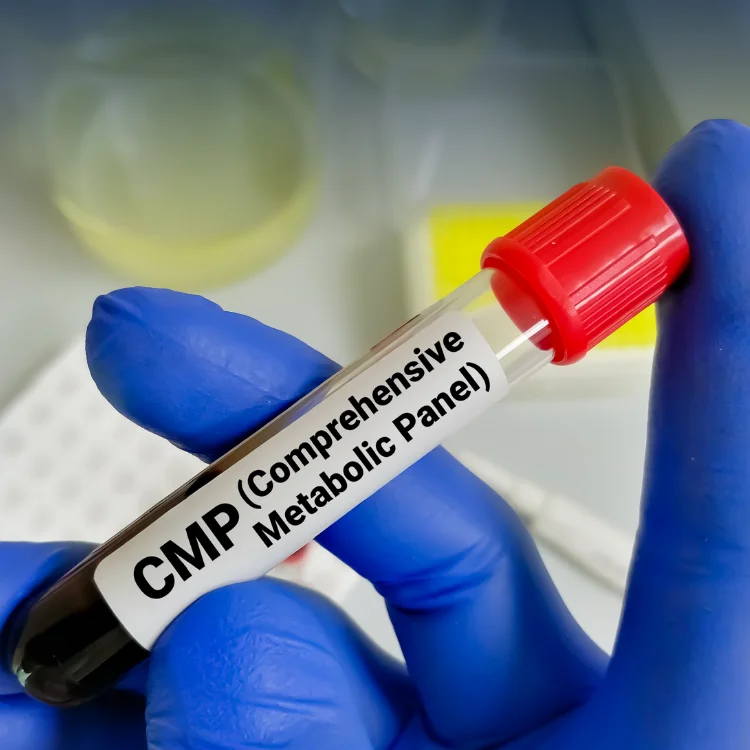
Our Approach to Hair Regeneration
At Biohackr Health, our approach to hair restoration blends medical precision with regenerative science. Every treatment plan begins with an in-depth analysis of your underlying causes—hormonal shifts, nutrient deficiencies, thyroid dysfunction, or inflammation—before selecting therapies that address both the scalp and systemic imbalances.
Our San Francisco and Palo Alto clinics specialize in advanced microneedling, exosome therapy, and PRF injections, often layered for synergistic effect. Unlike most practices that stop at PRP or PRF, Biohackr integrates Age Zero Exosomes—next-generation biologics that activate the body’s innate repair mechanisms at the cellular level.
Microneedling with Exosomes
Microneedling is one of the most effective first-line regenerative treatments for hair loss. Using sterile, single-use medical-grade needles, the procedure creates controlled micro-injuries within the dermis at the follicular base. This process stimulates the wound-healing cascade, triggering the release of growth factors, stem cells, and new blood vessels to revitalize dormant follicles.3,4
At Biohackr Health, topical Age Zero Exosomes are applied immediately during microneedling for amplified follicular activation. While the treatment is well-tolerated, patients can expect numbing beforehand and temporary scalp sensitivity afterward. Most complete three sessions spaced 4–6 weeks apart, with annual maintenance for long-term results.
Key Benefits:
- Promotes growth factor and stem cell release
- Increases blood flow and follicle nutrient supply
- Improves hair count, thickness, and texture
- Enhances uptake of regenerative topicals (PRF, minoxidil, exosomes)

PRF Injections (with Optional Typical Exosomes)
Platelet-Rich Fibrin (PRF) represents the evolution of traditional PRP therapy. Like PRP, PRF is autologous—derived from your own blood—but processed without anticoagulants or additives, forming a natural fibrin matrix that provides a sustained release of growth factors over several days.5,6 This fibrin scaffold also enhances dermal papilla cell proliferation and migration, the biological drivers of new follicle formation.7
In a 2025 prospective study, injectable PRF improved hair density and scalp health in 80 % of patients with androgenetic alopecia who had not responded to standard therapies.8 Patients reported visible thickening and decreased scalp inflammation within six months.
Biohackr offers PRF as a 3-6 treatment series, spaced one month apart, followed by annual maintenance. Some patients may undergo additional treatments to meet their individual needs.
After PRF injections, many patients benefit from adding topical Age Zero Exosomes to further amplify the regenerative process. Exosomes complement PRF by activating additional cellular pathways that promote angiogenesis and follicle signaling.
Why PRF over PRP?
- Longer growth factor release window (days vs hours)
- Contains leukocytes for immune modulation and tissue repair
- Forms a natural fibrin scaffold that improves follicle anchoring
- Produces higher patient satisfaction scores and visible scalp improvements

Age Zero Exosomes: Why They're Different
Exosomes are nanoscale extracellular vesicles that carry genetic and protein “messages” between cells, orchestrating regeneration and repair. In hair restoration, they act as cellular messengers that stimulate dormant follicles to re-enter the growth (anagen) phase, improve scalp circulation, and enhance pigment cell activity.9
At Biohackr Health, we use Resilielle Age Zero Exosomes, derived from Wharton’s Jelly mesenchymal stem cells—the youngest, most potent form of regenerative tissue. Unlike many exosome products, Age Zero is never lyophilized (freeze-dried), preserving its biological activity. It remains suspended in clinical-grade saline and is CLIA-certified for conformity and safety.
Age Zero Exosomes contain high concentrations of regenerative growth factors that target multiple layers of follicular function:
- Epidermal Growth Factor (EGF) – Stimulates follicular matrix cell elongation
- Insulin-Like Growth Factor 1 (IGF-1) – Promotes follicle cycling from resting to active growth
- Fibroblast Growth Factors (FGFs) – Support follicle formation and dermal papilla activity
- Vascular Endothelial Growth Factor (VEGF) – Enhances microvascular formation for nutrient delivery
- Stem Cell Factor (SCF) – Supports melanocytes for natural color restoration
These biologics make Age Zero a cornerstone of Biohackr’s next-generation regenerative protocols. It can be layered with microneedling or PRF to optimize both cellular signaling and nutrient perfusion—addressing not just follicle survival, but full follicle rejuvenation.

Our Hair Loss Quiz matches your pattern, lifestyle, and lab results with the right regenerative therapies—PRF, exosomes, microneedling, and more.
At-Home and Prescription Therapies
While our in-office regenerative treatments accelerate follicle repair, true hair restoration also depends on daily support for scalp health, circulation, and nutrient delivery. At Biohackr Health, we often combine in-office sessions with targeted oral and topical therapies to extend and maintain results.
BIOHACKR HEALTH HAIR GROW + Nutraceutical
Formulated by physicians to target multiple pathways of hair loss, HAIR GROW + provides a clinical-grade blend of vitamins, minerals, amino acids, and adaptogens that address nutritional, hormonal, and inflammatory contributors to thinning hair.
Key Components and Their Benefits
- Biotin, Zinc, and Collagen Peptides – support keratin synthesis and hair-shaft strength 10
- Vitamins A, C, D and E – promote scalp and follicular health, antioxidant protection11
- Iron and Selenium – aid oxygen transport and protect follicular cells from oxidative stress12
- Ashwagandha & Holy Basil – adaptogenic botanicals that reduce cortisol-related shedding13
- Saw Palmetto (Serenoa repens) – naturally blocks conversion of testosterone to DHT, the hormone most linked to pattern hair loss14
- Resveratrol & Turmeric (Curcumin) – combat inflammatory signaling that can disrupt hair cycling
Results: Most patients report decreased shedding within 4–6 weeks and visible improvements in density and texture by six months of consistent use.

Topical and Oral Minoxidil
Minoxidil remains the gold-standard topical for both male and female pattern hair loss. As a vasodilator, it widens scalp capillaries to deliver more oxygen and nutrients to follicles, lengthening the growth (anagen) phase.
In clinical studies, 5 % minoxidil increased both hair count and shaft diameter in the majority of users within 16–24 weeks.15
How It Works
- Improves microvascular circulation around follicles
- Reactivates dormant follicles and extends the anagen phase
- Increases follicle size, producing thicker hair strands
Biohackr Health offers both medical-grade topical 5 % minoxidil as part of our PRF and microneedling treatments and oral formulations prescribed through telehealth. Patients can also integrate microneedling or PRF/exosome therapy to enhance minoxidil absorption and long-term response.16
Important Notes
- A mild increase in shedding may occur during the first 2–4 weeks as resting follicles transition to growth.
- Results require continued use; discontinuation leads to gradual regression over several months.
- Minoxidil can be safely combined with most medications under physician supervision

Prescription Support (Optional)
For select patients—especially those with androgen-driven hair loss—we may prescribe additional therapies after evaluating labs and hormone panels:
- Oral Finasteride (1 mg daily) – blocks 5-α-reductase to reduce scalp DHT levels17
- Low-Dose Oral Minoxidil (LDOM) – offers systemic vasodilatory benefits for diffuse thinning18
- Spironolactone (for women) – provides anti-androgenic effects that complement topical regimens19
These medications are introduced conservatively and monitored through telehealth to optimize safety and efficacy.

Supporting Scalp Health at Home
Small changes in daily habits can sustain long-term results:
- Use sulfate-free, pH-balanced shampoos to minimize irritation.
- Avoid tight hairstyles or excessive heat styling that stress follicles.
- Schedule trims every 6–8 weeks to reduce breakage.
- Maintain adequate hydration and balanced nutrition.
Choose Your Hair Regrow Package
| Package | What’s Included | Who It’s For | Investment |
|---|---|---|---|
BASIC |
• 3 PRF injection sessions • Medical-grade 5 % Minoxidil |
Early-to-moderate, focal thinning Ideal if you prefer using only your body’s biologic growth factors |
$1,800 (3 sessions) Save $450 vs. single sessions |
HAIR REGROW XO - Most Popular |
• 3 sessions: PRF + Topical Age Zero Exosomes • Medical-grade 5 % Minoxidil |
Moderate thinning Combines autologous PRF with next-generation exosomes for synergistic results |
$2,200 (3 sessions) Save $1,550 vs. single sessions |
HAIR REGROW XO PLUS - Most Comprehensive |
• 3 PRF + Exosome sessions (first month) • 90-day custom-compounded medication • Medical-grade 5 % Minoxidil |
Moderate-to-severe thinning Designed for patients seeking the fastest, fullest restoration through intensive early-phase therapy |
$2,950 (complete package) |
MICRONEEDLING + EXOSOMES |
• Medical-grade microneedling • Topical Age Zero Exosomes • Medical-grade 5 % Minoxidil |
Diffuse hair loss or patients preferring a non-injectable, full-scalp approach |
$950 per treatment or $2,200 for 3 treatments |
All packages include:
- Complimentary consultation
- Post-treatment care plan
- Annual maintenance recommendations
Package Comparison: Which Is Right for You?
Choose BASIC if you:
- Have early or focal thinning.
- Prefer an all-autologous (your own biologic) treatment.
- Are budget-conscious or new to regenerative therapy.
Choose HAIR REGROW XO if you:
- Have moderate thinning or diffuse loss.
- Want to add next-generation regenerative exosomes for amplified results.
- Desire visibly thicker, stronger strands in 3–6 months.
Choose HAIR REGROW XO PLUS if you:
- Prefer physician-compounded topical medication for continued at-home support.
- Have more advanced hair loss.
- Want the most comprehensive, aggressive protocol.
Choose MICRONEEDLING + EXOSOMES if you:
- Have diffuse thinning across the scalp.
- Prefer a non-injectable approach.
- Want more product volume and known potency to inject (PRF amounts and quality can vary from patient to patient depending on age, health, etc)
- Want to enhance topical absorption and follicle activity through microchannel delivery.
What to Expect: Your Hair Restoration Journey
Your experience at Biohackr Health is designed to be collaborative, transparent, and results-driven. From your first consultation through long-term maintenance, every step is physician-supervised and tailored to your individual goals.
Step 1: Complimentary Consultation (45 Minutes)
Your journey begins at our San Francisco or Palo Alto location—or virtually via telehealth for out-of-area patients.
During this appointment, we will:
- Review your medical history, medications, and lifestyle factors.
- Assess your hair-loss pattern using standardized scales (Norwood for men, Ludwig for women).
- Examine scalp and follicle health under magnification.
- Discuss treatment options, expected outcomes, and pricing.
- Order your Comprehensive Blood Analysis for Hair Loss, if not already completed.
This consultation is complimentary for all hair-restoration services—there’s never an obligation to proceed.
Step 2: Treatment Sessions
Each session lasts about 45 minutes and includes:
- Scalp preparation – cleansing and marking treatment areas.
- Topical numbing – applied 10–15 minutes prior to minimize discomfort.
- Procedure – PRF injections or microneedling with exosomes and/or Minoxidil.
- Post-care serum application – exosomes or Minoxidil to optimize absorption.
- Aftercare review – your provider will outline what to expect over the next 48 hours.
Comfort Level:
Most patients rate discomfort between 3–5 / 10 even for microneedling, which is the more sensitive procedure. Numbing cream and optional cooling therapy minimize pain. Expect mild tenderness or temporary scalp redness for 24–48 hours.
Schedule:
- Initial series: 3 treatments spaced 4–6 weeks apart.
- Maintenance: 1 booster session per year, or as recommended.
Step 3: Post-Treatment Care
For best results:
- Avoid washing your hair for 24–48 hours.
- Skip strenuous exercise and direct sun exposure for 24 hours.
- Stay hydrated (8–10 glasses of water daily).
- Follow your at-home protocol (supplements, Minoxidil, custom topical).
- Avoid alcohol for 24 hours and minimize scalp irritation products.
Possible, temporary side effects:
- Mild swelling or redness (24–48 hours).
- Sensitivity at injection or microneedling sites.
- Rare bruising or infection (< 1 %).
Step 4: Results Timeline
Weeks 1 – 4
Reduced shedding; scalp feels healthier. Temporary increase in shedding may occur as dormant follicles reactivate.
Weeks 5 – 12
Fine “baby hairs” begin to emerge; existing strands appear thicker.
Months 3 – 6
Noticeable increase in hair density (+ 20–30 %) and thickness (+ 20 %). Color and texture often improve.
Months 6 – 12
Continued growth and strengthening; results stabilize with maintenance sessions.
Beyond 12 Months
Ongoing support with Biohackr’s supplements, Minoxidil, and hormone optimization helps sustain long-term results.
Step 5: Maintenance & Longevity
Hair restoration is an ongoing partnership.
To preserve results:
- Schedule annual maintenance (PRF or microneedling + exosomes).
- Continue Biohackr Health Hair GROW + supplement and Minoxidil.
- Re-evaluate hormones and nutritional markers yearly.
- Maintain a balanced diet, manage stress, and prioritize sleep.
Without maintenance, hair density may gradually decline within 12–24 months as natural aging resumes.
Integrating Hair Restoration with Other Biohacking Therapies
At Biohackr Health, hair restoration is more than a cosmetic procedure—it’s a window into your overall health and cellular performance. True regeneration happens when your internal systems support what we do externally. That’s why our team often integrates your hair program with other biohacking therapies that target inflammation, hormones, and mitochondrial function at their root.
NAD⁺ IV Therapy: Cellular Energy and Repair
NAD⁺ (nicotinamide adenine dinucleotide) fuels every metabolic process in the body, including those that drive hair follicle activity. Levels naturally decline with age, stress, and illness, reducing the cell’s ability to repair DNA and produce energy.
Restoring NAD⁺ levels through intravenous therapy can enhance cellular communication, improve tissue recovery, and may promote healthier, more resilient hair growth.20 We can test for NAD levels in our clinic to ensure you are a good candidate for this treatment, and for best NAD level restoration recommend our oral NMN powder.
Best paired with: Microneedling + Exosomes, PRF, or nutrient IVs such as the Beauty IV, which replenish essential vitamins and antioxidants to support scalp and follicle vitality.
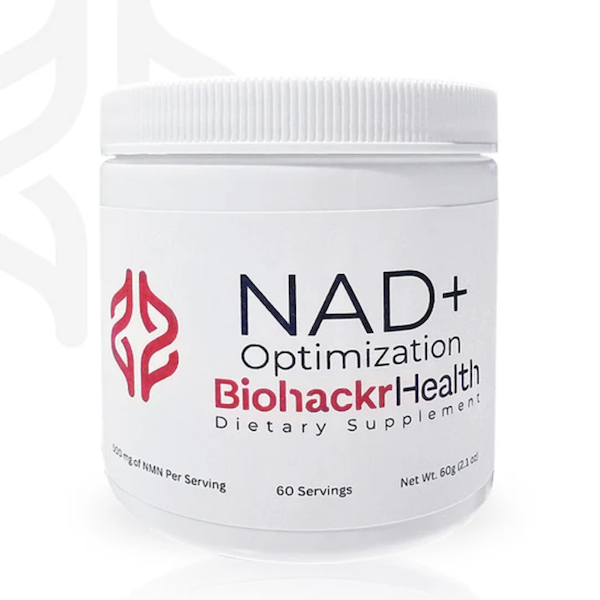
Bioidentical Hormone Replacement Therapy (BHRT)
Hormonal balance plays a defining role in hair health—especially estrogen, testosterone, DHT, thyroid hormones, and cortisol.
Through comprehensive hormone testing, our physicians identify deficiencies or excesses that contribute to shedding and thinning. When indicated, BHRT can restore equilibrium and improve follicular activity within 3–6 months.21
Best paired with: PRF or microneedling treatments for patients in perimenopause, menopause, or andropause.
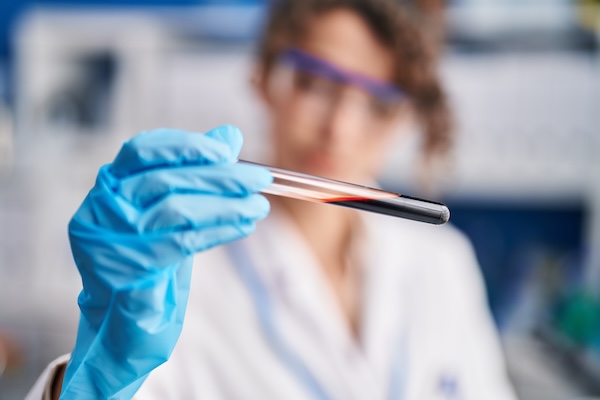
Nutrient IV Therapy: Essential Support from Within
Micronutrients like biotin, vitamin C, zinc, and B-complex vitamins are integral to hair growth and follicle regeneration. Even mild deficiencies can slow progress.
Biohackr’s Fit & Toned IV and Metabo Boost IV therapies replenish these nutrients at therapeutic doses to support collagen synthesis, cellular metabolism, and stress resistance.22
Best paired with: Biohackr Hair GROW + supplement and daily topical Minoxidil for compounded benefits.
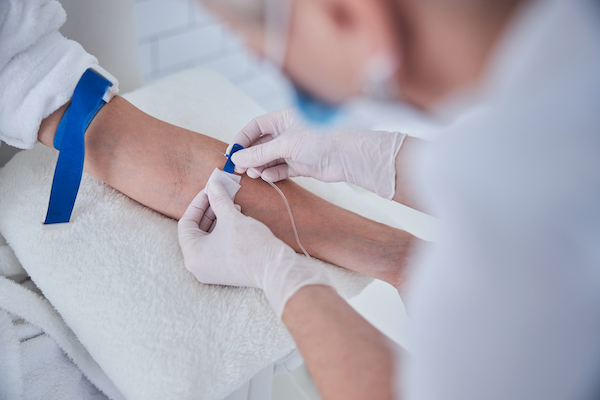
Peptide Therapy: The Future
Select peptide therapies are being studied for their regenerative, anti-inflammatory, and angiogenic effects. Some of these may enhance growth-factor signaling and improve scalp healing post-procedure. Biohackr Health is committed to being on the front line as more research is being done in this exciting field.
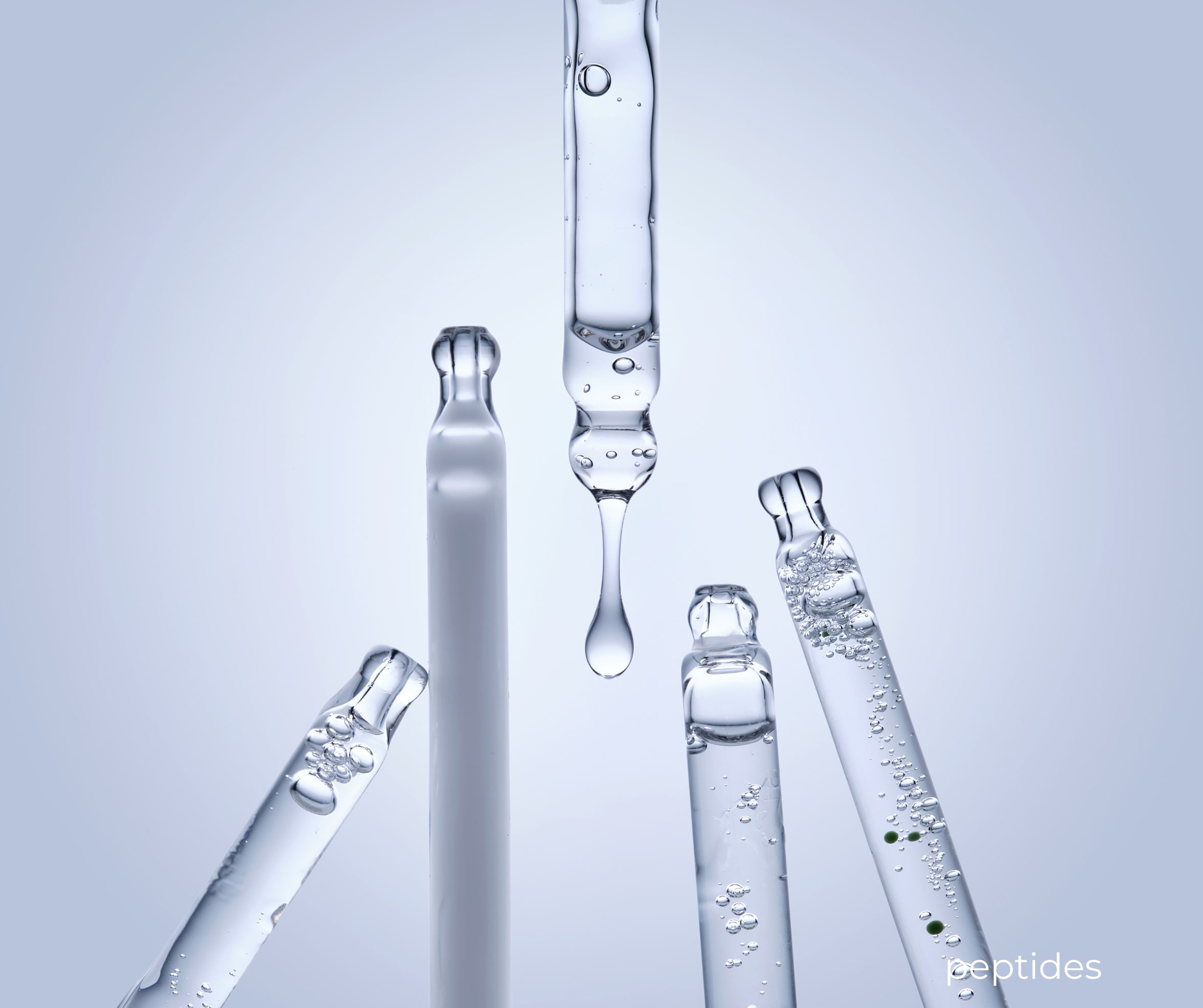
Weight Optimization and GLP-1 Programs
Rapid or unmonitored weight loss can trigger temporary shedding known as telogen effluvium.
At Biohackr Health, our physician-guided GLP-1 weight programs emphasize gradual fat loss with concurrent hair-support measures—nutrient IVs, supplements, and topical therapies—to protect against stress-related shedding.
Best paired with: Early intervention using Biohackr Hair GROW +, Minoxidil, and exosome treatments.

Why Integration Matters
Combining regenerative treatments with systemic optimization allows Biohackr Health to:
- Address root causes like hormonal imbalance, nutrient deficiency, or mitochondrial fatigue.
- Improve treatment response and recovery after in-office procedures.
- Deliver longer-lasting, more natural-looking results by supporting cellular renewal inside and out.
This comprehensive, science-driven strategy defines The Biohackr Difference—a commitment to treating the person, not just the hair.

Home & Lifestyle Support: The Often Overlooked Factor
What you do between treatments matters:
- Use gentle, sulfate-free shampoos
- Finish rinsing with cool water to close follicles
- Minimize chemical treatments or heat styling
- Loosen ponytails or extensions to avoid traction
- Sleep with a silk pillowcase or scarf
- Review supplements or hair products with your clinician
Our team can even coordinate with your hairstylist to create a scalp-friendly routine that supports regrowth.
Why Choose Biohackr Health for Hair Restoration in San Francisco & the Bay Area
At Biohackr Health, hair restoration is more than a cosmetic service—it’s a science-based partnership between you and our physician team. Every recommendation is rooted in data, clinical experience, and measurable biology. Unlike many clinics that stop at PRP or PRF, we go further—combining microneedling, exosomes, and hormone optimization for truly regenerative, personalized care.
Physician-Led Expertise You Can Trust
Every treatment is guided by Board-Certified physicians specializing in regenerative medicine, hormone health, and longevity.
- Dr. Lauren Greenberg, a Stanford-trained Plastic Surgeon and regenerative medicine specialist, brings over 25 years of aesthetic and cellular-level expertise.
- Dr. Lori Bluvas, a Board-Certified OB/GYN with decades of experience in hormone optimization and functional medicine, ensures internal and external health are aligned.
Together, they guide every Biohackr protocol—so your plan is grounded in science, not trends.
Science-Backed, Evidence-Driven Care
Each component of our hair restoration system is supported by peer-reviewed studies:
- Microneedling increases vascularization and follicular activity, improving density and caliber of hair strands.
- PRF injections have demonstrated up to an 80% response rate in androgenetic alopecia, significantly improving hair density and scalp symptoms.
- Exosomes enhance follicular signaling, reduce inflammation, and accelerate regrowth through more than 200 growth factors and proteins.
- Minoxidil remains the FDA-approved gold standard for hair stimulation.
- Hormone and nutrient optimization—including thyroid, DHT, and micronutrient analysis—targets the internal triggers that often underlie hair loss.
At Biohackr, we don’t just follow the literature—we publish, interpret, and evolve our protocols alongside it.
Premium-Grade Materials and Technology
Our clinic uses the most rigorously vetted tools and biologics available:
- Age Zero Exosomes by Resilielle – derived from Wharton’s Jelly mesenchymal stem cells (“age zero” origin). Never lyophilized, frozen in medical-grade saline for maximal purity and potency.
- Medical-Grade Microneedling Devices – sterile, single-use tips with depth control to reach the follicular base precisely, maximizing results while maintaining safety.
- Advanced PRF Systems – single-spin centrifuges that preserve a fibrin matrix for sustained growth-factor release.
- NSF-Certified Supplements and NAD⁺ Therapies – ensuring third-party verified purity and efficacy in everything we administer or recommend.
A Holistic, Root-Cause Approach
True restoration demands a full-body lens. We assess hormonal balance, nutrition, inflammation, and stress before treatment begins, ensuring that your scalp is not only treated—but primed to respond. This integrated model distinguishes Biohackr Health from conventional aesthetic centers and dermatology clinics.
The Patient Experience: Where Empathy Meets Precision
Hair loss is personal, and our approach reflects that. Every consultation begins with compassion—listening to your concerns, history, and goals before discussing any treatment.
- Comfort First: We use prescription-grade topical numbing and gentle techniques to minimize discomfort during microneedling or PRF sessions.
- Emotional Support: Our providers understand how emotionally charged hair loss can be. You’ll never feel rushed, dismissed, or “sold to”—just guided.
- Collaborative Care: When appropriate, we coordinate with your hairstylist or primary care provider to ensure your at-home routines support your in-office progress.
- Realistic Timelines: Results take time—typically 3–6 months for visible growth, 9–12 months for full results—but we’ll help you track improvements along the way with follow-ups and photos.
“You’re not just getting a treatment—you’re joining a program built on empathy, precision, and accountability.” — Dr. Lauren Greenberg
Results You Can See and Feel
Patients typically report:
- 20–30% increase in hair count in treated areas
- Up to 20% increase in hair thickness
- Visible new growth within 3–6 months
- Improved scalp health and reduced shedding within 4–6 weeks
- Better texture, shine, and color over time
Every protocol is customized—no templates, no “one-size-fits-all” packages.
Experience the Biohackr Difference
Our San Francisco (Marina District) and Palo Alto clinics combine medical precision with a boutique experience. Every member of our compassionate medical team—whether a Medical Assistant, Licensed Vocational Nurse (LVN), or Registered Nurse (RN)—plays an active role in your care. All consultations and treatments are performed by our experienced RNs under physician supervision, ensuring a seamless, professional, and supportive experience that helps you feel confident again.
Learn More from Dr. Greenberg
Every Biohackr blog post on hair restoration is written by Dr. Lauren Greenberg, a board-certified plastic surgeon and regenerative medicine specialist. Each post summarizes peer-reviewed clinical research, breaking down the science behind microneedling, PRF, exosomes, and hormone optimization.

Who Is a Good Candidate for Hair Restoration?
Hair loss affects people of every gender, age, and background—but not all types of hair loss respond to the same therapies. At Biohackr Health, our evaluation process identifies what’s driving your shedding, thinning, or pattern loss so your plan targets the why, not just the what.
You May Be a Candidate If You Have:
- Thinning or shedding hair at the crown, temples, or hairline
- Diffuse thinning (overall volume loss) often triggered by stress, hormones, or nutritional imbalances
- Early to moderate androgenetic alopecia—before follicles have completely miniaturized
- Hormone-related hair changes during menopause, postpartum, or thyroid dysfunction
- Stress- or illness-related shedding (telogen effluvium)
- Hair loss following rapid weight loss, medications, or nutrient deficiencies
If you still have active follicles—even if they’re producing fine, vellus hairs—restoration therapies can help reactivate growth and improve caliber.
When to Start Treatment
Early intervention is key. Studies show that once follicles remain dormant for extended periods, they lose their regenerative potential. Most patients see the best outcomes when treatment begins within the first 6–24 months of noticeable thinning.
Who May Not Be an Ideal Candidate
While our therapies are safe and minimally invasive, some situations may limit results:
- Advanced baldness or scarring alopecia (where follicles are destroyed)
- Uncontrolled thyroid disease or autoimmune conditions that accelerate shedding
- Significant anemia, malnutrition, or hormonal instability that needs correction first
- Active scalp infections or open wounds
For these cases, our physicians may first recommend medical stabilization or targeted supplementation before proceeding with microneedling, PRF, or exosomes.
Personalized Approach for Every Patient
No two hair journeys are the same. During your consultation, our team evaluates:
- Blood biomarkers (thyroid, DHT, ferritin, vitamin D, etc.)
- Lifestyle, stress, and nutrition patterns
- Hormonal balance (for both men and women)
This data-driven approach ensures that your plan—whether it involves microneedling with exosomes, PRF, medications, or a combination—reflects your unique physiology and goals.
“We look beyond the hair to understand what your body is trying to tell us.”
— Dr. Lori Bluvas
Take the First Step Toward Fuller, Healthier Hair
Hair loss doesn’t have to define you. With our evidence-based regenerative therapies, personalized care, and holistic approach, Biohackr Health helps patients across San Francisco and the Bay Area restore confidence—strand by strand.
Serving San Francisco (Marina District, Pacific Heights, Cow Hollow, Russian Hill) and Palo Alto, Menlo Park, Los Altos, Atherton, Mountain View, and beyond.

Frequently Asked Questions About Hair Restoration

How much hair loss is normal?
It’s common to lose 50–150 hairs per day. However, if you notice excessive shedding in the shower, widening parts, or thinner ponytails, it may be time to have your scalp and hormones evaluated.
What causes hair loss?
Hair loss can result from a combination of factors, including genetics, hormonal changes, stress, nutrient deficiencies, thyroid issues, medications, or even certain hair care practices. Understanding the root cause is essential to finding the right treatment.
What types of hair loss do you treat?
Biohackr Health treats a wide range of hair loss conditions, including androgenetic alopecia (hereditary thinning), telogen effluvium (stress-related shedding), postpartum and menopausal hair loss, traction alopecia, and thinning related to nutrient or hormonal imbalance.
Are the treatments different for men and women?
Yes, they can be. Men often experience receding hairlines or crown thinning, while women tend to have diffuse thinning. We tailor each plan to your individual hormone profile, scalp health, and goals.
Does microneedling hurt?
Microneedling can be slightly uncomfortable, but we use strong topical numbing to minimize discomfort. Most patients describe it as a brief stinging or pressure sensation that fades within a day.
Can exosomes be injected?
No. In the United States, exosomes are applied topically after microneedling or PRF to enhance follicle activity and scalp healing.
How long does it take to see results?
Most patients notice less shedding and healthier hair texture after a few weeks. Visible thickening and regrowth typically appear between three and six months, with continued improvement over time.
How many sessions will I need?
Most people start with a series of three treatments spaced four to six weeks apart, then transition to maintenance sessions once or twice per year.
Can PRF and microneedling be combined?
Yes. PRF injections can be followed by microneedling and exosome application to enhance follicular response and improve overall results.
What if my hair loss is caused by hormones or thyroid issues?
Our comprehensive blood analysis identifies thyroid, DHT, or nutrient imbalances that contribute to shedding. When appropriate, we can incorporate hormone or nutrient therapy into your hair restoration plan.
How long do results last?
With regular maintenance and good scalp health, results can last for years. Many patients choose annual touch-ups to sustain density and strength. The factors that caused hair loss are multiple and continuing, so your treatment needs to be too.
What makes Biohackr Health different?
Most clinics stop at PRP or PRF. Biohackr Health takes a whole-body approach, combining microneedling, exosomes, hormone optimization, and nutritional support to address both the biological and lifestyle factors behind hair loss.
In just two minutes, our Hair Loss Quiz helps pinpoint the root cause and outlines your next step toward real results.
Sources
1 English RS Jr, Ruiz S, DoAmaral P. Microneedling and Its Use in Hair Loss Disorders: A Systematic Review. Dermatol Ther (Heidelb). 2022 Jan;12(1):41-60. doi: 10.1007/s13555-021-00653-2. Epub 2021 Dec 1. PMID: 34854067; PMCID: PMC8776974. Available: https://pubmed.ncbi.nlm.nih.gov/34854067/. Accessed October 3, 2025.
2 Gupta AK, Quinlan EM, Venkataraman M, Bamimore MA. Microneedling for Hair Loss. J Cosmet Dermatol. 2022 Jan;21(1):108-117. doi: 10.1111/jocd.14525. Epub 2021 Oct 29. PMID: 34714971. Available: https://pubmed.ncbi.nlm.nih.gov/34714971/. Accessed October 31, 2025.
3 English RS Jr, Ruiz S, DoAmaral P. Microneedling and Its Use in Hair Loss Disorders: A Systematic Review. Dermatol Ther (Heidelb). 2022 Jan;12(1):41-60. doi: 10.1007/s13555-021-00653-2. Epub 2021 Dec 1. PMID: 34854067; PMCID: PMC8776974. Available: https://pubmed.ncbi.nlm.nih.gov/34854067/. Accessed October 3, 2025.
4 Ozcan KN, Sener S, Altunisik N, Turkmen D. Platelet rich plasma application by dermapen microneedling and intradermal point-by-point injection methods, and their comparison with clinical findings and trichoscan in patients with androgenetic alopecia. Dermatol Ther. 2022 Jan;35(1):e15182. doi: 10.1111/dth.15182. Epub 2021 Nov 15. PMID: 34714961. Available: https://pubmed.ncbi.nlm.nih.gov/34714961/. Accessed October 31, 2025.
5 Yao S, Chen X, Li S, Zhou L, Bai Q, Zhao C, Huang S. New tool in our arsenal: efficacy of injectable platelet-rich fibrin (i-PRF) in androgenetic alopecia treatment. Arch Dermatol Res. 2025 Feb 26;317(1):493. doi: 10.1007/s00403-025-04038-9. PMID: 40009221. Available: https://pubmed.ncbi.nlm.nih.gov/40009221/. Accessed October 31, 2025.
6 Schiavone G, Paradisi A, Ricci F, Abeni D. Injectable Platelet-, Leukocyte-, and Fibrin-Rich Plasma (iL-PRF) in the Management of Androgenetic Alopecia. Dermatol Surg. 2018 Sep;44(9):1183-1190. doi: 10.1097/DSS.0000000000001584. PMID: 30045107. Available: https://pubmed.ncbi.nlm.nih.gov/30045107/. Accessed October 31, 2025.
7 Lu K, Han Q, Ma Z, Yan Q, Pei Y, Shi P, Zhang J, Rong K, Ma K, Li P, Hou T. Injectable platelet rich fibrin facilitates hair follicle regeneration by promoting human dermal papilla cell proliferation, migration, and trichogenic inductivity. Exp Cell Res. 2021 Dec 1;409(1):112888. doi: 10.1016/j.yexcr.2021.112888. Epub 2021 Oct 26. PMID: 34715152. Available: https://pubmed.ncbi.nlm.nih.gov/34715152/. Accessed October 31, 2025.
8 Yao S, Chen X, Li S, Zhou L, Bai Q, Zhao C, Huang S. New tool in our arsenal: efficacy of injectable platelet-rich fibrin (i-PRF) in androgenetic alopecia treatment. Arch Dermatol Res. 2025 Feb 26;317(1):493. doi: 10.1007/s00403-025-04038-9. PMID: 40009221. Available: https://pubmed.ncbi.nlm.nih.gov/40009221/. Accessed October 31, 2025.
9 Resiliélle. About Age Zero. Available: https://resilielle.com/pages/exosomes. Accessed October 31, 2025.
10 Trüeb RM. Serum Biotin Levels in Women Complaining of Hair Loss. Int J Trichology. 2016 Apr-Jun;8(2):73-7. doi: 10.4103/0974-7753.188040. PMID: 27601860; PMCID: PMC4989391. Available: https://pubmed.ncbi.nlm.nih.gov/27601860/. Accessed October 31, 2025.
11 Trüeb RM. Serum Biotin Levels in Women Complaining of Hair Loss. Int J Trichology. 2016 Apr-Jun;8(2):73-7. doi: 10.4103/0974-7753.188040. PMID: 27601860; PMCID: PMC4989391. Available: https://pubmed.ncbi.nlm.nih.gov/27601860/. Accessed October 31, 2025.
12 Olsen EA, Reed KB, Cacchio PB, Caudill L. Iron deficiency in female pattern hair loss, chronic telogen effluvium, and control groups. J Am Acad Dermatol. 2010 Dec;63(6):991-9. doi: 10.1016/j.jaad.2009.12.006. Epub 2010 Oct 13. PMID: 20947203. Available: https://pubmed.ncbi.nlm.nih.gov/20947203/. Accessed October 31, 2025.
13 Chandrasekhar K, Kapoor J, Anishetty S. A prospective, randomized double-blind, placebo-controlled study of safety and efficacy of a high-concentration full-spectrum extract of ashwagandha root in reducing stress and anxiety in adults. Indian J Psychol Med. 2012 Jul;34(3):255-62. doi: 10.4103/0253-7176.106022. PMID: 23439798; PMCID: PMC3573577. Available: https://pubmed.ncbi.nlm.nih.gov/23439798/. Accessed October 31, 2025.
14 Prager N, Bickett K, French N, Marcovici G. A randomized, double-blind, placebo-controlled trial to determine the effectiveness of botanically derived inhibitors of 5-alpha-reductase in the treatment of androgenetic alopecia. J Altern Complement Med. 2002 Apr;8(2):143-52. doi: 10.1089/acm.2002.8.143. Erratum in: J Altern Complement Med. 2006 Mar;12(2):199. PMID: 12006122. Available: https://pubmed.ncbi.nlm.nih.gov/12006122/. Accessed October 31, 2025.
15 Blume-Peytavi U, Hillmann K, Dietz E, Canfield D, Garcia Bartels N. A randomized, single-blind trial of 5% minoxidil foam once daily versus 2% minoxidil solution twice daily in the treatment of androgenetic alopecia in women. J Am Acad Dermatol. 2011 Dec;65(6):1126-1134.e2. doi: 10.1016/j.jaad.2010.09.724. Epub 2011 Jun 23. PMID: 21700360. Available: https://pubmed.ncbi.nlm.nih.gov/21700360/. Accessed October 31, 2025.
16 Dhurat R, Sukesh M, Avhad G, Dandale A, Pal A, Pund P. A randomized evaluator blinded study of effect of microneedling in androgenetic alopecia: a pilot study. Int J Trichology. 2013 Jan;5(1):6-11. doi: 10.4103/0974-7753.114700. PMID: 23960389; PMCID: PMC3746236. Available: https://pubmed.ncbi.nlm.nih.gov/23960389/. Accessed October 31, 2025.
17 Kaufman KD, Olsen EA, Whiting D, Savin R, DeVillez R, Bergfeld W, Price VH, Van Neste D, Roberts JL, Hordinsky M, Shapiro J, Binkowitz B, Gormley GJ. Finasteride in the treatment of men with androgenetic alopecia. Finasteride Male Pattern Hair Loss Study Group. J Am Acad Dermatol. 1998 Oct;39(4 Pt 1):578-89. doi: 10.1016/s0190-9622(98)70007-6. PMID: 9777765. Available: https://pubmed.ncbi.nlm.nih.gov/9777765/. Accessed October 31, 2025.
18 Vañó-Galván S, Pirmez R, Hermosa-Gelbard A, Moreno-Arrones ÓM, Saceda-Corralo D, Rodrigues-Barata R, Jimenez-Cauhe J, Koh WL, Poa JE, Jerjen R, Trindade de Carvalho L, John JM, Salas-Callo CI, Vincenzi C, Yin L, Lo-Sicco K, Waskiel-Burnat A, Starace M, Zamorano JL, Jaén-Olasolo P, Piraccini BM, Rudnicka L, Shapiro J, Tosti A, Sinclair R, Bhoyrul B. Safety of low-dose oral minoxidil for hair loss: A multicenter study of 1404 patients. J Am Acad Dermatol. 2021 Jun;84(6):1644-1651. doi: 10.1016/j.jaad.2021.02.054. Epub 2021 Feb 24. PMID: 33639244. Available: https://pubmed.ncbi.nlm.nih.gov/33639244/. Accessed October 31, 2025.
19 Sinclair RD. Female pattern hair loss: a pilot study investigating combination therapy with low-dose oral minoxidil and spironolactone. Int J Dermatol. 2018 Jan;57(1):104-109. doi: 10.1111/ijd.13838. Epub 2017 Dec 12. PMID: 29231239. Available: https://pubmed.ncbi.nlm.nih.gov/29231239/. Accessed October 31, 2025.
20 Rajman L, Chwalek K, Sinclair DA. Therapeutic Potential of NAD-Boosting Molecules: The In Vivo Evidence. Cell Metab. 2018 Mar 6;27(3):529-547. doi: 10.1016/j.cmet.2018.02.011. PMID: 29514064; PMCID: PMC6342515. Available: https://pubmed.ncbi.nlm.nih.gov/29514064/. Accessed October 31, 2025.
21 Santoro N, Epperson CN, Mathews SB. Menopausal Symptoms and Their Management. Endocrinol Metab Clin North Am. 2015 Sep;44(3):497-515. doi: 10.1016/j.ecl.2015.05.001. PMID: 26316239; PMCID: PMC4890704. Available: https://pubmed.ncbi.nlm.nih.gov/26316239/. Accessed October 31, 2025.
22 Trüeb RM. Oxidative stress in ageing of hair. Int J Trichology. 2009 Jan;1(1):6-14. doi: 10.4103/0974-7753.51923. PMID: 20805969; PMCID: PMC2929555. Available: https://pubmed.ncbi.nlm.nih.gov/20805969/. Accessed October 31, 2025.
23 Pickart L, Margolina A. Regenerative and Protective Actions of the GHK-Cu Peptide in the Light of the New Gene Data. Int J Mol Sci. 2018 Jul 7;19(7):1987. doi: 10.3390/ijms19071987. PMID: 29986520; PMCID: PMC6073405. Available: https://pubmed.ncbi.nlm.nih.gov/29986520/. Accessed October 31, 2025.